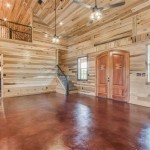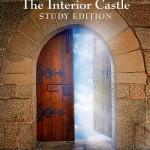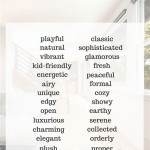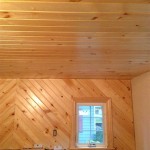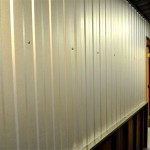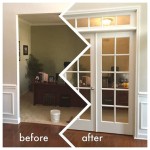Modern Contemporary Interior Design: A Fusion of Style and Functionality
Modern contemporary interior design represents a dynamic and ever-evolving approach to home aesthetics. It seamlessly blends the clean lines and minimalist sensibilities of modern design with the warmth, comfort, and eclecticism characteristic of contemporary style. This fusion results in spaces that are both stylish and functional, reflecting a modern lifestyle while embracing individual personality and artistic expression.
Key Features of Modern Contemporary Interior Design
Modern contemporary design is characterized by a unique set of features that distinguish it from other interior design styles. These features work in harmony to create spaces that are both aesthetically pleasing and practical.
1. Simplicity and Functionality:
At its core, modern contemporary design emphasizes simplicity and functionality. It prioritizes clean lines, geometric shapes, and a minimalist approach to furniture and decor. This focus on functionality ensures that every element in the space serves a purpose, contributing to a streamlined and organized environment. The lack of clutter and intricate designs allows for a sense of openness and spaciousness, making the space feel more relaxed and inviting.
2. Neutral Color Palettes and Natural Materials:
Modern contemporary design typically utilizes a neutral color palette, with shades of white, gray, black, and beige forming the foundation. These neutral hues create a calming and sophisticated backdrop, allowing bolder accents and pops of color to stand out. Natural materials such as wood, stone, leather, and linen are frequently incorporated, bringing warmth, texture, and a sense of connection to nature into the space.
3. Open Floor Plans and Natural Light:
Modern contemporary design often favors open floor plans, creating a sense of flow and connectivity between different areas of the home. This openness enhances the feeling of spaciousness and allows for natural light to flood the space. Large windows and skylights are commonly utilized to maximize natural light, adding a sense of vibrancy and energy to the room.
4. Eclectic Mix of Styles and Textures:
While modern contemporary design prioritizes simplicity and functionality, it also embraces a sense of eclecticism. This allows for the incorporation of various textures and materials, creating visual interest and depth within the space. Vintage furniture, unique art pieces, and global influences can be seamlessly integrated into the design, reflecting the homeowner's personality and creating a truly unique and personalized environment.
5. Emphasis on Sustainability and Eco-Friendly Practices:
Modern contemporary design often prioritizes sustainability and eco-friendly practices. This translates into the use of recycled materials, energy-efficient appliances, and sustainable building practices. Incorporating these elements into the design not only reduces environmental impact but also promotes a sense of responsibility and well-being. By choosing materials that are ethically sourced and environmentally conscious, homeowners can create a space that is both stylish and sustainable.
Variations and Sub-Styles
Within the broad realm of modern contemporary design, several sub-styles have emerged, each offering a unique interpretation of the core principles. For instance, Scandinavian modern contemporary incorporates elements of Scandinavian design, emphasizing natural light, light wood tones, and a minimalist aesthetic. Industrial modern contemporary draws inspiration from industrial spaces, featuring exposed brick, metal accents, and vintage industrial lighting. These variations allow for a greater level of personalization and cater to diverse tastes and preferences.
Creating a Modern Contemporary Interior
When designing a modern contemporary interior, it's essential to consider the following factors:
- Functionality and Flow: Prioritize practicality and create a seamless flow between different areas of the space.
- Color Palette: Start with a neutral base and incorporate pops of color through artwork, textiles, and furniture.
- Lighting: Maximize natural light and use a combination of ambient, task, and accent lighting to create the desired atmosphere.
- Furniture and Decor: Choose furniture with clean lines and geometric shapes. Add texture and interest with accessories, artwork, and plants.
- Materials: Incorporate natural materials such as wood, stone, and leather, and consider incorporating sustainable and recycled materials.
Modern contemporary interior design offers a versatile and dynamic approach to home decor, combining the best of both modern and contemporary styles. By embracing simplicity, functionality, and a touch of eclecticism, homeowners can create spaces that are both stylish and welcoming. Whether you prefer a Scandinavian minimalist aesthetic or an industrial-inspired vibe, modern contemporary design provides a framework for creating a home that truly reflects your unique personality and lifestyle.

Difference Between Modern Vs Contemporary Interior Design

Contemporary Vs Modern Interior Design Everything To Know Décor Aid

Modern Design Vs Contemporary Difference Between And Styles

Modern Design Vs Contemporary Everything To Know

Contemporary Design Style And The Essentials To Master It Décor Aid

Contemporary Vs Modern Interior Design Everything To Know Décor Aid

Posh Home Modern Vs Contemporary Design Interior Live In Style

Evergreen Design Elements That Define Contemporary Interiors 7 Features Last The Test Of Time Archdaily

Modern Contemporary Interiors Ideas The New Book To Curl Up With

Contemporary Interior Design Style All You Need To Know Beautiful Homes
Related Posts

